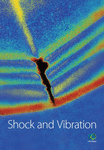The Hybrid Method of VMD-PSR-SVD and Improved Binary PSO-KNN for Fault Diagnosis of Bearing
Abstract
Fault diagnosis of bearing based on variational mode decomposition (VMD)-phase space reconstruction (PSR)-singular value decomposition (SVD) and improved binary particle swarm optimization (IBPSO)-K-nearest neighbor (KNN) which is abbreviated as VPS-IBPSOKNN is presented in this study, among which VMD-PSR-SVD (VPS) is presented to obtain the features of the bearing vibration signal (BVS), and IBPSO is presented to select the parameter K of KNN. In IBPSO, the calculation of the next position of each particle is improved to fit the evolution of the particles. The traditional KNN with different parameter K and trained by the training samples with the features based on VMD-SVD (VS-KNN) can be used to compare with the proposed VPS-IBPSOKNN method. The experimental result demonstrates that fault diagnosis ability of bearing of VPS-IBPSOKNN is better than that of VS-KNN, and it can be concluded that fault diagnosis of bearing based on VPS-IBPSOKNN is effective.
1. Introduction
Defects of bearing can lead to serious damage for the entire mechanical system [1–4], so it is very important to study the reliable fault diagnosis method to prevent the bearing from malfunction [5–7]. The features of the bearing vibration signal (BVS) are key to the fault diagnosis results of bearing. Thus, in this study, variational mode decomposition (VMD)-phase space reconstruction (PSR)-singular value decomposition (SVD) which is abbreviated as VPS is presented to obtain the features of the BVS. VMD [8–10] can decompose the signal into a set of band-limited intrinsic mode functions (BLIMFs) with certain sparsity properties. In this study, the BVS can be decomposed into several BLIMFs by VMD. By PSR for BLIMFs of the BVS, the dynamic characteristics of BLIMFs of the BVS can be reflected.
K-nearest neighbor (KNN) classifier is a simple and reliable classification method [11]. KNN classifier is a multiclassification method, which can recognize the several states of bearing simultaneously. However, the selection of the parameter K of KNN has a certain influence on the classification performance of KNN. The improved binary particle swarm optimization (IBPSO) is presented to select the parameter K of KNN. In IBPSO, the calculation of the next position of each particle is improved to fit the evolution of the particles.
In this study, the hybrid method of VMD-PSR-SVD and IBPSO-KNN (VPS-IBPSOKNN) is presented for fault diagnosis of bearing. The traditional KNN with different parameter K and trained by the training samples with the features based on VMD-SVD can be used to compare with the proposed VPS-IBPSOKNN method. The experimental result demonstrates that fault diagnosis ability of bearing of VPS-IBPSOKNN is better than that of VS-KNN.
2. K-Nearest Neighbor Classifier
In the KNN classifier, for a new sample to be classified, its distance to each sample in the sampling set must be computed, and the new sample is classified to the class that contains the most samples from this set of closest K instances [12, 13].
KNN classifier is a multiclassification method, which can recognize the several states of bearing simultaneously.
3. Variational Mode Decomposition
4. Feature Extraction of BVS Based on VPS
SVD for matrix Yq which is the PSR signal of the qth BLIMF can be performed, and define hq,1, hq,2, …, hq,R(R = min{m, n − (m − 1) × τ}) as the singular values of the matrix Yq, hq,r ≥ 0 (q = 1,2,3,4; r = 1,2, …, R).
The singular values of the PSR signals of the four BLIMFs of the BVS constitute a vector as [h1,1 ⋯ h1,R h2,1 ⋯ h2,R h3,1 ⋯ h3,R h4,1 ⋯ h4,R]. By calculating the relative values of the elements in the vector as follows: , the features of the BVS based on VPS are described as . When m is less than or equal to n − (m − 1) × τ, the features of the BVS based on VPS can be described as .
5. Parameter Optimization of KNN Based on IBPSO
In this study, the parameter K of the KNN model is selected by IBPSO, and is employed as transform function to fit the evolution of the particles instead of in IBPSO.
Figure 1 shows the process of the selection of the parameter K of KNN by IBPSO, which can be described in detail as follows:
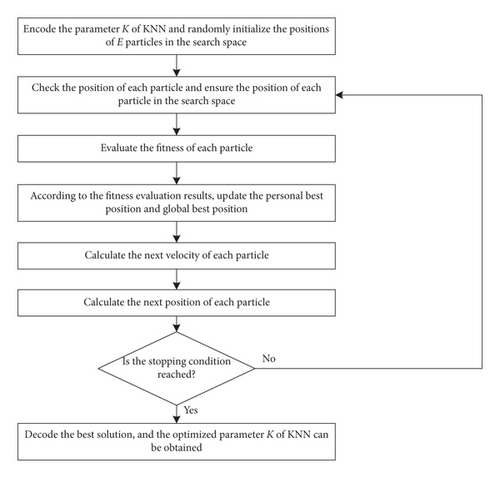
Step 1. Encode the parameter K of KNN and randomly initialize the positions of E particles in the search space.
As shown in Table 1, the binary code string represents the parameter K of KNN, and D denotes the length of binary code string representing the parameter K.
| K | ||
|---|---|---|
| … | ||
Step 2. Check the position of each particle and ensure the position of each particle in the search space.
Check the binary codes representing the parameter K of KNN and ensure that one of the binary codes representing the parameter K of each particle is “1” at least.
Step 3. Evaluate the fitness of each particle.
J-fold cross validation is employed in the process of evaluating the fitness of each particle. Divide the training samples equally into J subsets of the samples, among which J − 1 subsets of the samples are employed to train the KNN model, and the remaining subset is used to test the KNN model. Each subset can be employed as the testing subset. Then, the total diagnosis accuracy Ai of the J subsets of the samples can be obtained as Ai = Ncorrect/Ntotal, where Ntotal denotes the total number of the J subsets of the samples, Ncorrect denotes the total number of the J subsets of the samples with correct diagnosis, and J is set to 5 here.
Here, the fitness of the ith particle is defined as follows:
Step 4. According to the fitness evaluation results, update the personal best position and global best position.
Step 5. Calculate the next velocity of each particle.
Each particle flies toward a new position by the velocity calculated as follows:
Step 6. Calculate the next position of each particle.
In this study, instead of the traditional calculation method of the next position of each particle, the next position of each particle is calculated according to equations (7) and (8).
Step 7. The same procedures from Step 2 to Step 6 are repeated until the stopping condition is reached.
Step 8. Decode the best solution, and the optimized parameter K of KNN can be obtained.
6. Experimental Analysis
The bearing vibration data are employed from “bearings vibration data set” of Case Western Reserve University in the experiment [19], and the fault data used here are collected under the condition of single point faults with fault diameter of 0.014 inches. Three groups of samples are derived from BVSs acquired under three different loads, among which the samples are obtained based on BVS acquired under 1 HP motor load in group 1, the samples are obtained based on BVS acquired under 2 HP motor load in group 2, and the samples are obtained based on BVS acquired under 3 HP motor load in group 3. Each group includes 300 samples, among which 75 samples represent normal state, 75 samples represent inner race (IR) fault, 75 samples represent outer race (OR) fault, and 75 samples represent ball fault.
The first 50 samples of each state in each group are employed as the training samples, and the remaining 25 samples of each state in each group are employed as the testing samples. Thus, the training samples include 600 samples, among which 150 samples represent normal state, 150 samples represent IR fault, 150 samples represent OR fault, and 150 samples represent ball fault; the testing samples include 300 samples, among which 75 samples represent normal state, 75 samples represent IR fault, 75 samples represent OR fault, and 75 samples represent ball fault.
Each BVS is decomposed into four BLIMFs by VMD. The four BLIMFs of one of the samples representing normal state in group 2 are shown in Figure 2.
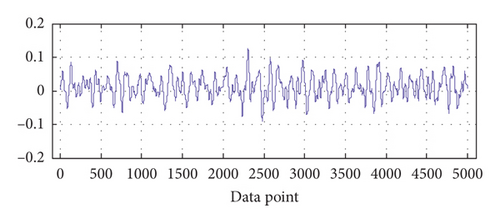
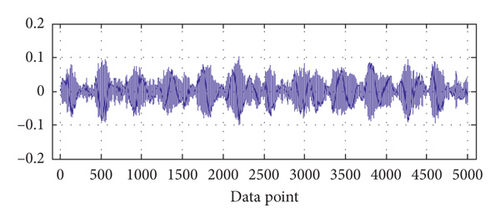
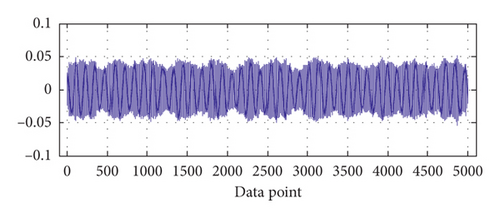
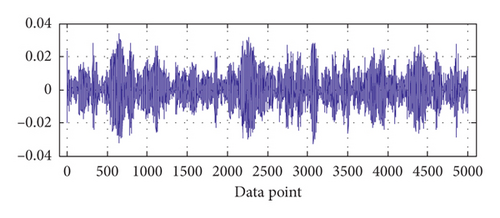
Here, m (embedding space dimension) is set to 5, and τ (time delay) is set to 3; it is obvious that m is less than n − (m − 1) × τ. Thus, the features of the BVS based on VMD-PSR-SVD can be described as .
In this study, the parameter K of KNN is selected by IBPSO. The value range of the parameter K is [1, 24 − 1], and the adjacent values’ intervals of the parameter K are 1, thus, the length of binary code string representing the parameter K is 4.
The traditional KNN with different parameter K and trained by the training samples with the features based on VMD-SVD can be used to compare with the proposed VPS-IBPSOKNN method. Here, the value range of the parameter K is [1, 24 − 1], and the intervals of the adjacent values of the parameter K are 1.
The relative singular values of the matrix composed of the four BLIMFs are obtained as the features of the BVS in the feature extraction method of the BVS based on VMD-SVD. The features of a set of samples with different states including normal state, IR fault, OR fault, and ball fault based on VMD-SVD are shown in Figure 3. For the same samples as above, their features based on VMD-PSR-SVD are shown in Figure 4.
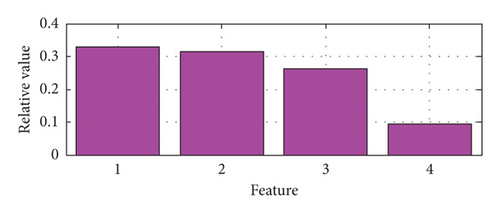
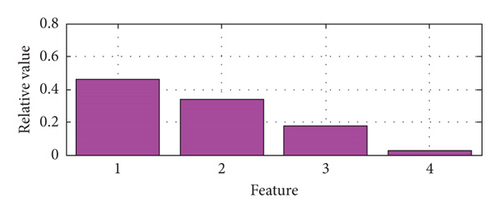
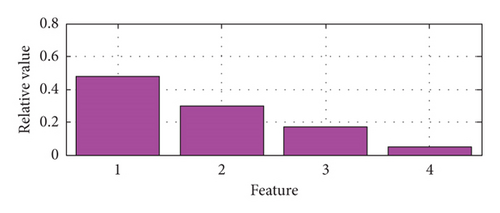
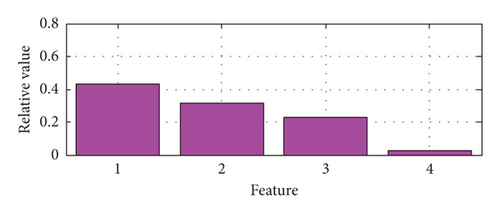
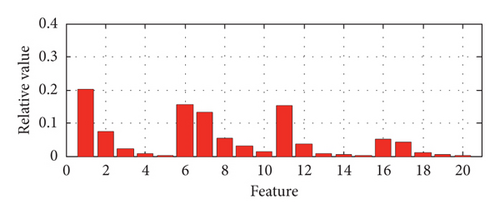
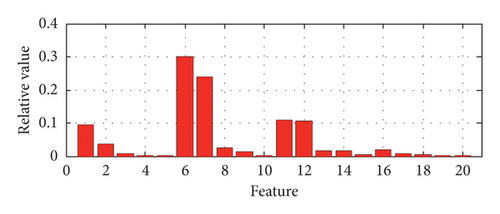
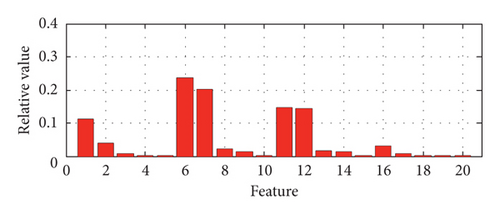
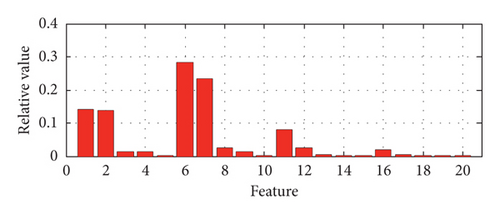
As shown in Table 2, the number of testing samples with correct diagnosis of VPS-IBPSOKNN is 295, and the diagnosis accuracy of VPS-IBPSOKNN is 98.33%; the number of testing samples with correct diagnosis among the 15 VS-KNN models (K = 1∼15) is at most 280, and the best diagnosis accuracy among the 15 VS-KNN models (K = 1∼15) is 93.33% in this case. It can be seen that fault diagnosis ability of bearing of VPS-IBPSOKNN is better than that of VS-KNN.
| The number of training samples | The number of testing samples | Diagnosis method | The number of testing samples with correct diagnosis | Diagnosis accuracy (%) |
|---|---|---|---|---|
| 600 | 300 | VPS-IBPSOKNN | 295 | 98.33 |
| VS-KNN (K = 1) | 268 | 89.33 | ||
| VS-KNN (K = 2) | 269 | 89.67 | ||
| VS-KNN (K = 3) | 278 | 92.67 | ||
| VS-KNN (K = 4) | 277 | 92.33 | ||
| VS-KNN (K = 5) | 280 | 93.33 | ||
| VS-KNN (K = 6) | 278 | 92.67 | ||
| VS-KNN (K = 7) | 279 | 93.00 | ||
| VS-KNN (K = 8) | 278 | 92.67 | ||
| VS-KNN (K = 9) | 278 | 92.67 | ||
| VS-KNN (K = 10) | 278 | 92.67 | ||
| VS-KNN (K = 11) | 277 | 92.33 | ||
| VS-KNN (K = 12) | 278 | 92.67 | ||
| VS-KNN (K = 13) | 277 | 92.33 | ||
| VS-KNN (K = 14) | 276 | 92.00 | ||
| VS-KNN (K = 15) | 273 | 91.00 |
7. Conclusion
The VPS-IBPSOKNN method for fault diagnosis of bearing is presented in this study. VPS is presented to obtain the features of the BVS, among which VMD is employed to decompose the BVS into several BLIMFs, and by PSR for BLIMFs of the BVS, the dynamic characteristics of BLIMFs of the BVS can be reflected. IBPSO is presented to select the parameter K of KNN, and in IBPSO, the calculation of the next position of each particle is improved to fit the evolution of the particles. The experimental result demonstrates that fault diagnosis ability of bearing of VPS-IBPSOKNN is better than that of VS-KNN, and it can be concluded that fault diagnosis of bearing based on VPS-IBPSOKNN is effective.
Conflicts of Interest
The author declares that there are no conflicts of interest.
Acknowledgments
This project is supported by the Fundamental Research Funds for the Central Universities (no. 2232017D-14).
Open Research
Data Availability
The data used to support the findings of this study are available from the corresponding author upon request.



